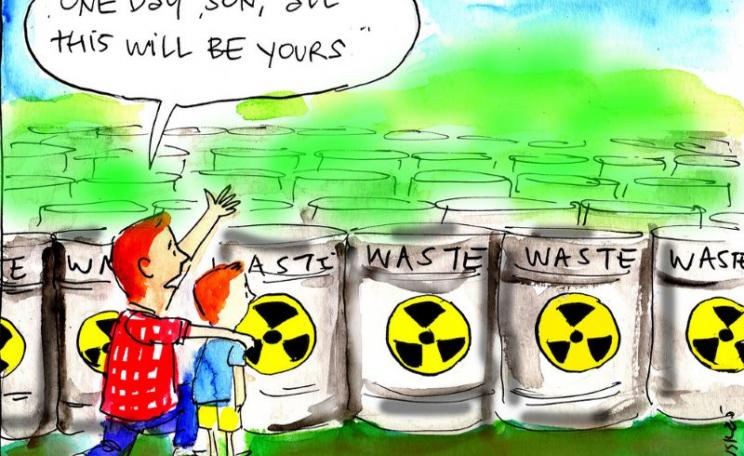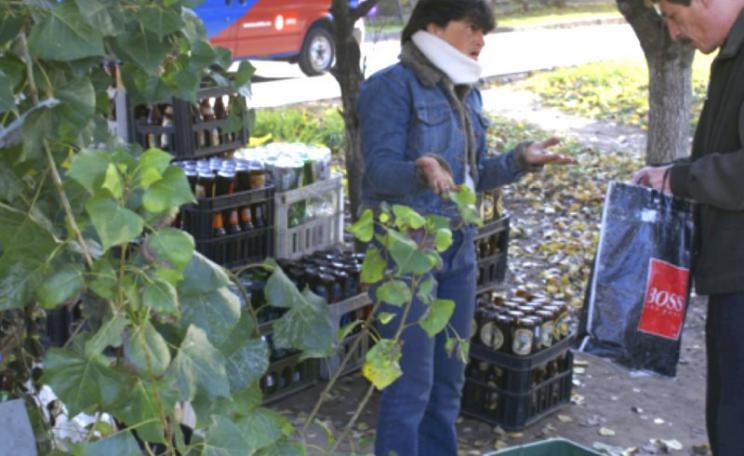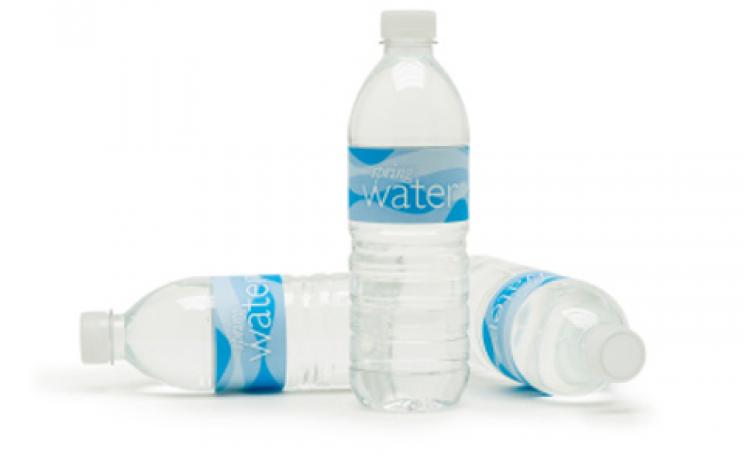In 2009, the world’s first satellite collision occurred. Travelling at almost 18,000mph, the commercial communications satellite Iridium 33 and Russian military satellite Cosmos 2251 were obliterated, the apogee of human technological achievement transformed into detritus in the blink of an eye.
The mingled fragments joined a dense layer of some 8,000 other items of manmade junk orbiting the earth – space station waste, old rocket boosters, defunct or destroyed satellites, the remnants of anti-satellite missiles that made them that way. This “space debris” has now reached tipping point, according to a report by the US National Research Council (NRC).
There is enough currently in orbit, says the report, ‘to continually collide and create even more debris’. This is the so-called Kessler Syndrome, debris begetting more debris, a chain-reaction that could potentially render outer space out of bounds for millennia.
Nasa’s chief scientists, Nick Johnson, acknowledged last year that junk sitting in geosynchronous orbit (GEO) or low earth orbit (LEO) posed a “real, albeit low-level, threat” to spacecraft, and as recently as June this year the International Space Station narrowly avoided being struck by debris, its astronauts scrambling to their emergency escape capsules.
But what is ostensibly an extraterrestrial problem poses very real and significant terrestrial dangers, according to Richard Crowther of the UK Space Agency.
‘The direct consequence of cascading space debris is for spacecraft, but because we depend on satellites for navigation, transport, communications, weather forecasting and climate modelling, financial transactions and controlling power grid transmission, clearly the degradation of the space environment will have a wide-ranging impact on our lives.’
The geostationary ring is particularly important in this context, where satellites travel at the same speed as the earth turns on its axis; terrestrial antennae can thus be fixed rather than having to track across the sky. This is one of the unique regions that requires protection, says Crowther, and which is most threatened by space debris.
Nasa has been tracking orbiting objects wider than 10cm in diameter since it was founded in 1958, recording 25,000 over 50 years. But there are many hundreds of thousands of smaller objects that it doesn’t track, and at high velocity paint flakes, engine coolant and even dust can have the destructive properties of a sandstorm.
It also records which countries own what. With roughly 3,000 satellites from 50 nations in orbit, both operative and defunct, most countries invested in space development are being forced to take account of the issue.
A number of international treaties signed in the 1960s and 1970s reflect space-faring nations’ obligation to preserve that environment for the use of all, but there are no specific, binding regulations.
By dint of having been the main player in space until now, the US is responsible for the majority of space debris and is also leading efforts to remedy the situation. Meanwhile China is pushing ahead with plans for a space station and to land a man on the moon; it is already responsible for a disproportionate amount of debris following a 2007 anti-satellite missile test in which it blew up one of its defunct weather satellites.
As Heiner Klinkard, head of the space debris office at the European Space Agency, observes: ‘No one can force space-faring nations to act. Measures, once taken, will be on a voluntary, non-committing basis – as for all UN treaties.’
The UN Office for Outer Space Affairs (UNOOSA) issued guidelines for the mitigation of space debris in 2009, calling for “policies and laws to protect the public interest”. China went ahead and destroyed another satellite in January this year.
The UK was ahead of the game, albeit a minor player. The Outer Space Act 1986 requires anyone launching an object into space to have a licence and to be able to demonstrate a means of removing it.
But to row back from the “tipping point” described by the NRC – whose report Klinkrad considers ‘a fair appraisal, backed by competent board members’ – mitigation techniques will be required. He suggests the best solution would be to 'remove mass from critically populated orbit regimes at rates of typically 5-10 large spacecraft or orbital stages per year'.
He adds that bodies such as the UN’s Committee on the Peaceful Uses of Outer Space are beginning to deal with the issues of space junk, but warns that it will take a while.
‘In terms of how long we have to resolve the issue – when the situation becomes critical enough to force countries to act – mass removal from orbit should start as soon as possible. Critical concentrations have already been reached at some orbit altitudes.’
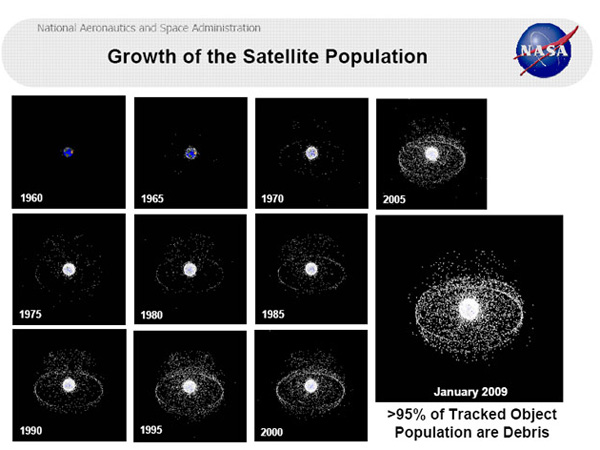 |
| How the amount of debris in space has grown over the past half a century |
Other suggestions – many detailed in a report last year prepared for the US Defense Advanced Research Projects Agency (Darpa), the so-called Catcher’s Mitt report – seem like science fiction: lasers, latter-day whaling techniques such as harpoons or nets, umbrellas to catch or some means of “sweeping” debris away.
The UK Space Agency is currently sponsoring work at the University of Southampton looking at which objects to retrieve and how. Industry is also beginning to see the opportunities presented by the need to clean up space, says Richard Crowther.
For him space tugs are the best option for resolving the issue: pulling debris into the earth’s atmosphere, where it will burn up, or pushing it to higher altitudes. One of the strongest candidates for retrieval is the European Space Agency’s Envisat observation satellite, he says. Envisat will come to the end of its life in 2013, but with no means of deorbiting will take 150 years to be pulled back into the earth’s atmosphere. Weighing eight tonnes, it could cause untold damage if allowed to break up in space.
He considers talk of tipping points and the degradation of space “emotive”, however.
‘It’s great that the NRC report has brought the issue to the attention of people outside the space community, but I don’t believe we will get to the point where we’re unable to operate in certain regions of space. In planetary terms we’re all in this together and people are taking this very seriously. I'd like to think we wouldn't be irresponsible enough to let it get that far.’
| READ MORE... | |
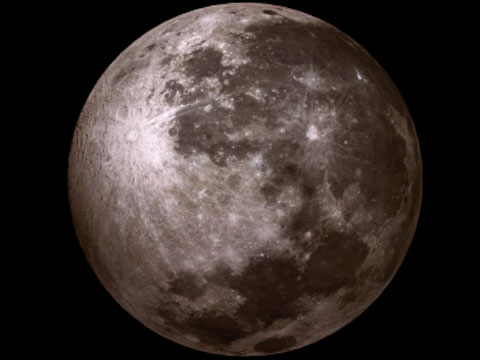 |
NEWS ANALYSIS Plans to strip mine the moon may soon be more than just science-fiction It may not be long before we start mining the moon for its resources, particularly the rare Helium-3 for its use in nuclear fusion |
 |
NEWS ANALYSIS How deep-sea mining could destroy the 'cradle of life on earth' As Papua New Guinea gives go-ahead to a Canadian mining company to dredge its coastal seabed for minerals, critics say environmental assessments have been inadequate, local objections ignored and new species of life could be extinct before they have even been discovered |
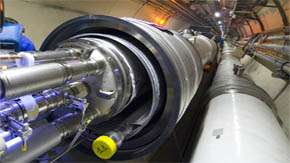 |
COMMENT Hadron colliders and the risk society As to global annihilation, I’m stumped. Most of us wouldn’t recognise a strangelet if it casually devoured us in the street |
 |
INVESTIGATION Space Race The Brazilian Space Agency and Britain’s Rutherford Appleton Laboratory are planning to boldly go into new realms of space-based rainforest protection. |
 |
NEWS Bill Gates' cloud-whitening trials 'a dangerous experiment' Microsoft founder Bill Gates providing funding for geoegineering experiment to increase whiteness of clouds, reflect more sunlight back into space and reduce global warming |



